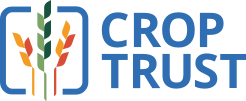More than Rice: An Inside Look at the Vietnam National Genebank
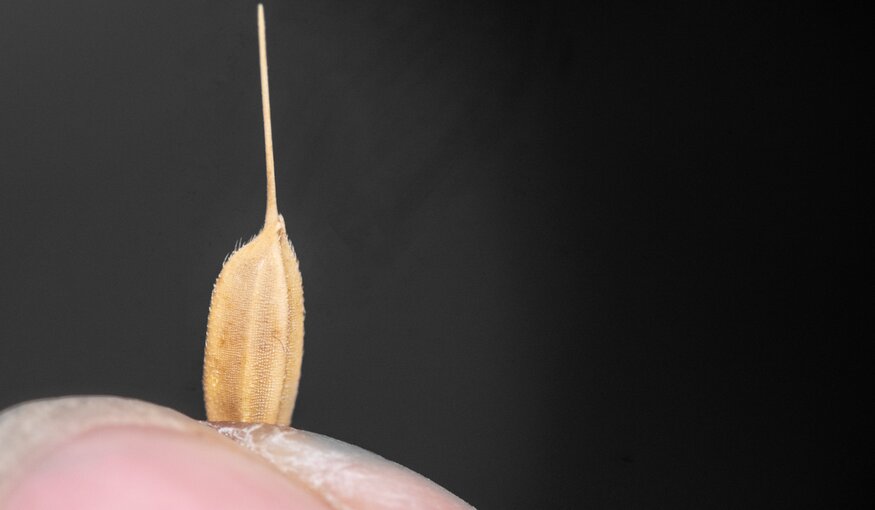
Rice seed at Vietnam National Genebank. Photo: Michael Major for Crop Trust
14 March 2023
Genebank experts supported by the Crop Trust’s BOLD (Biodiversity for Opportunities, Livelihoods and Development) Project recently visited the Vietnam National Genebank to evaluate its efforts to conserve crop diversity. Vietnam is one of 15 national genebanks that BOLD teams have reviewed. The staff of the genebank openly welcomed the reviewers, who were able to get an inside look at the journey of seeds and other plant material from field to fridge. Photographer Michael Major compiled this collection of photos to document the wide range of activities that the genebank conducts.
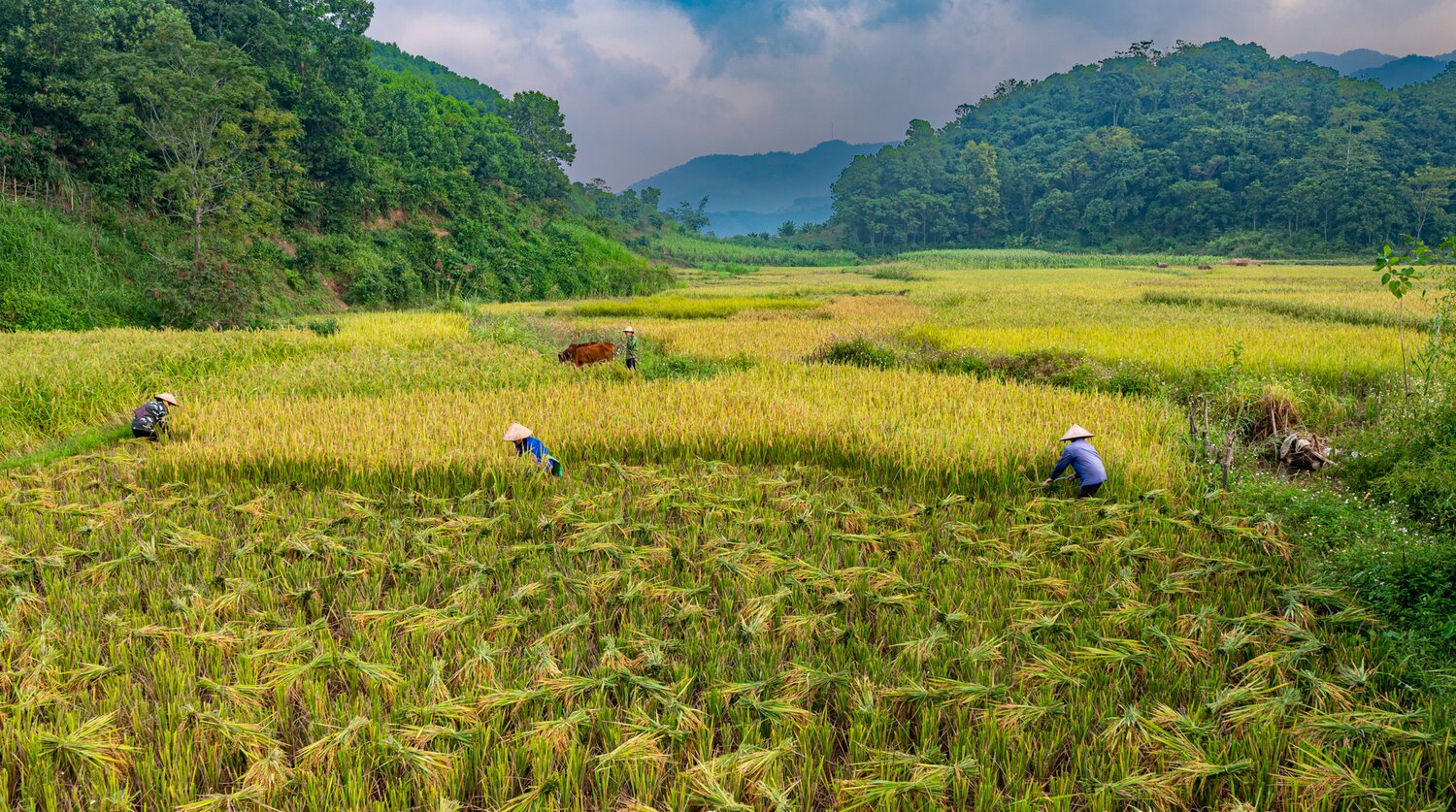
The Vietnamese eat a lot of rice. In fact, Vietnam is ranked as the third largest rice consumer in the world after China and India. So, you would expect that the Vietnam National Genebank conserves a lot of samples of rice varieties, particularly since Southeast Asia is also a hotspot of rice diversity.

And it does. But the Vietnamese also eat lots of other foods. To safeguard that crop diversity, the genebank also conserves 43,000 samples of seeds and other material of more than 400 other species of plants.
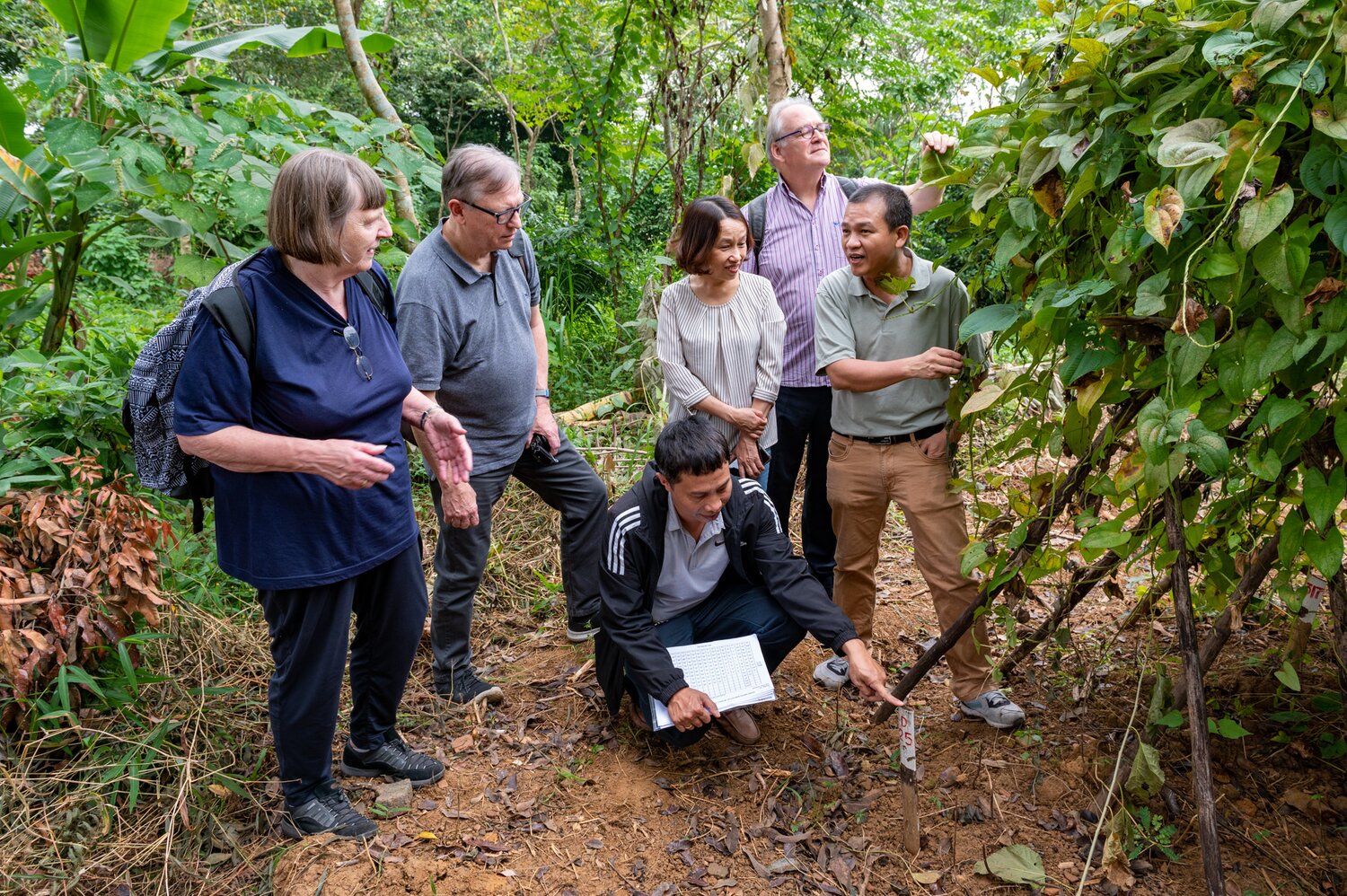
Genebank experts supported by the Crop Trust’s BOLD (Biodiversity for Opportunities, Livelihoods and Development) Project recently visited the Vietnam National Genebank to evaluate its efforts to conserve all this crop diversity. Vietnam is one of 15 national genebanks that BOLD review teams have visited.
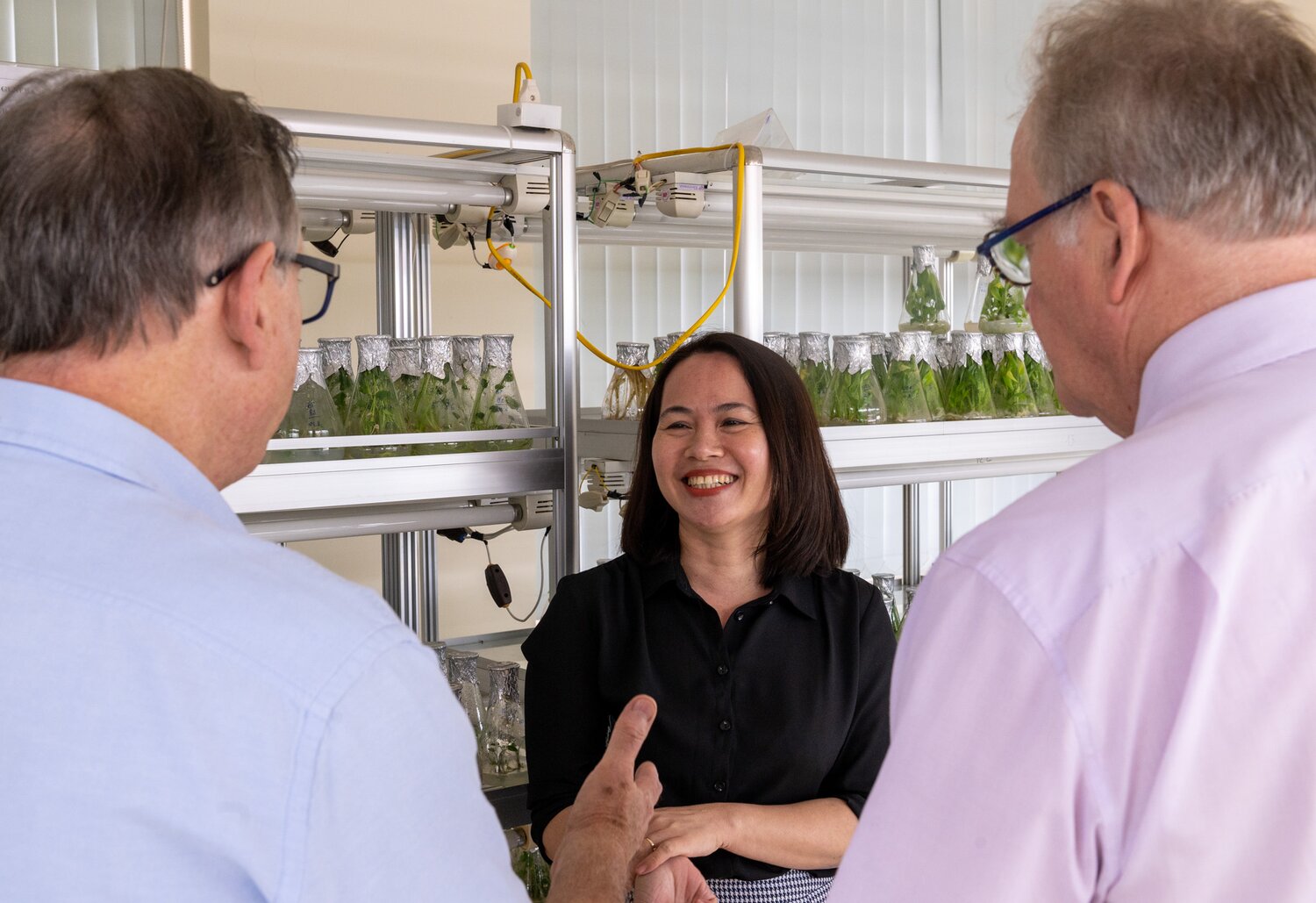
The staff of the Vietnam National Genebank openly welcomed the reviewers, who were able to get an inside look at the journey of seeds and other plant material from field to fridge.
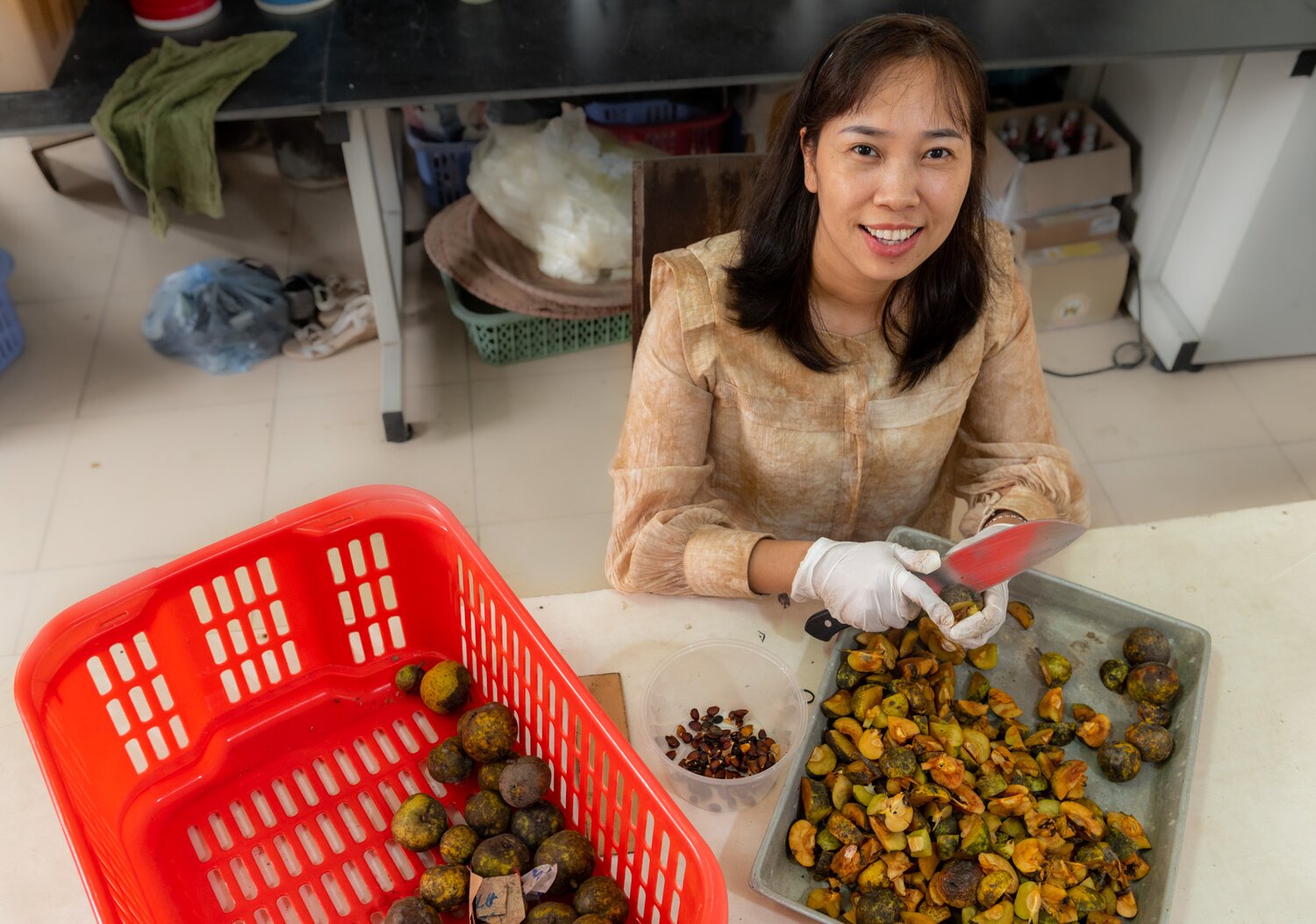
After the genebank acquires samples – either by collecting them in farmers’ fields or wild populations, or after regenerating previously collected samples on research stations – it must clean and process the seeds. Here, Nguyen Thi Hien, a genebank technician, removes seeds from wild apples.

Care needs to be taken to ensure that the identity of seed samples conserved in genebanks is maintained throughout the various processes, beginning with acquisition through to storage and distribution. Proper identification of seed samples conserved in genebanks requires careful documentation of data and information about the material. Herbarium voucher specimen and seed reference collections (pictured here) play an important role in the correct identification of seed samples.
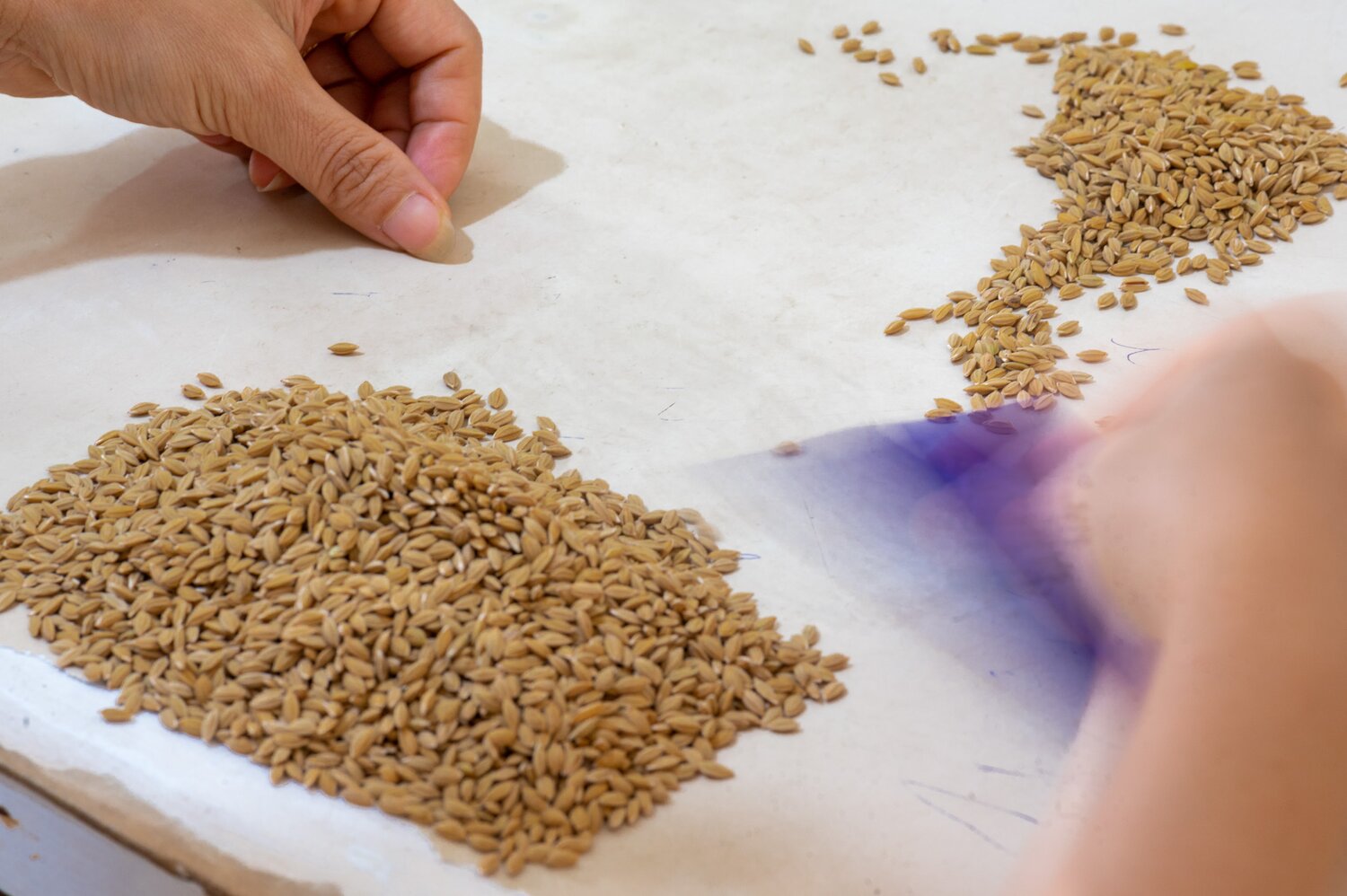
Seed cleaning should be done immediately after harvesting, or as soon as the material arrives at a genebank. Genebank staff meticulously remove debris, physical contaminants, damaged and infected seeds and seeds of other species.
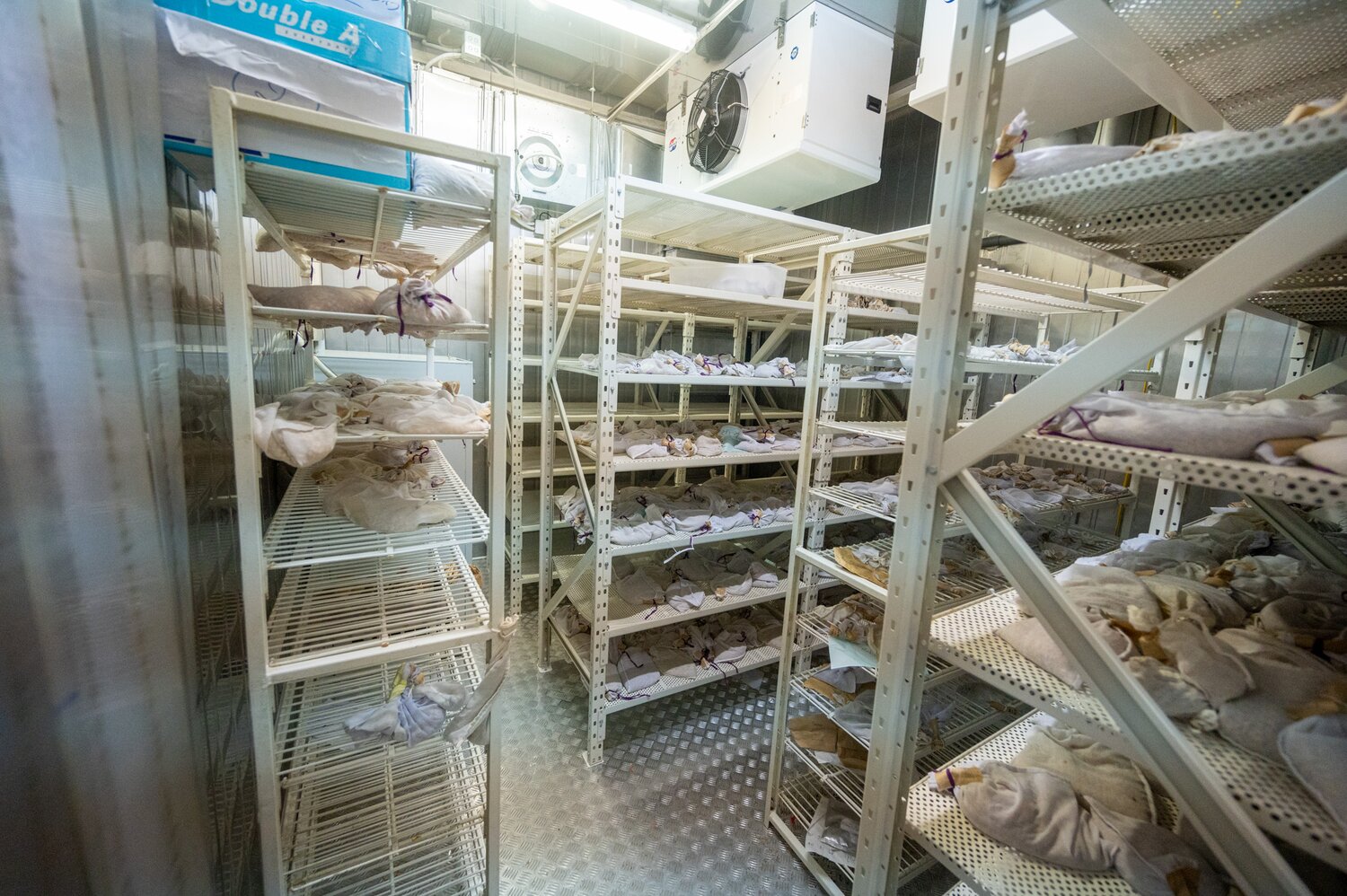
Prior to long-term storage, seed samples need to be dried until they reach an appropriate moisture content. Seeds that are stored in the cold when they are not at the optimal moisture content will not live as long. Seed samples at the Vietnam National Genebank are dried in a controlled environment at about 15°C and 15 percent relative humidity.
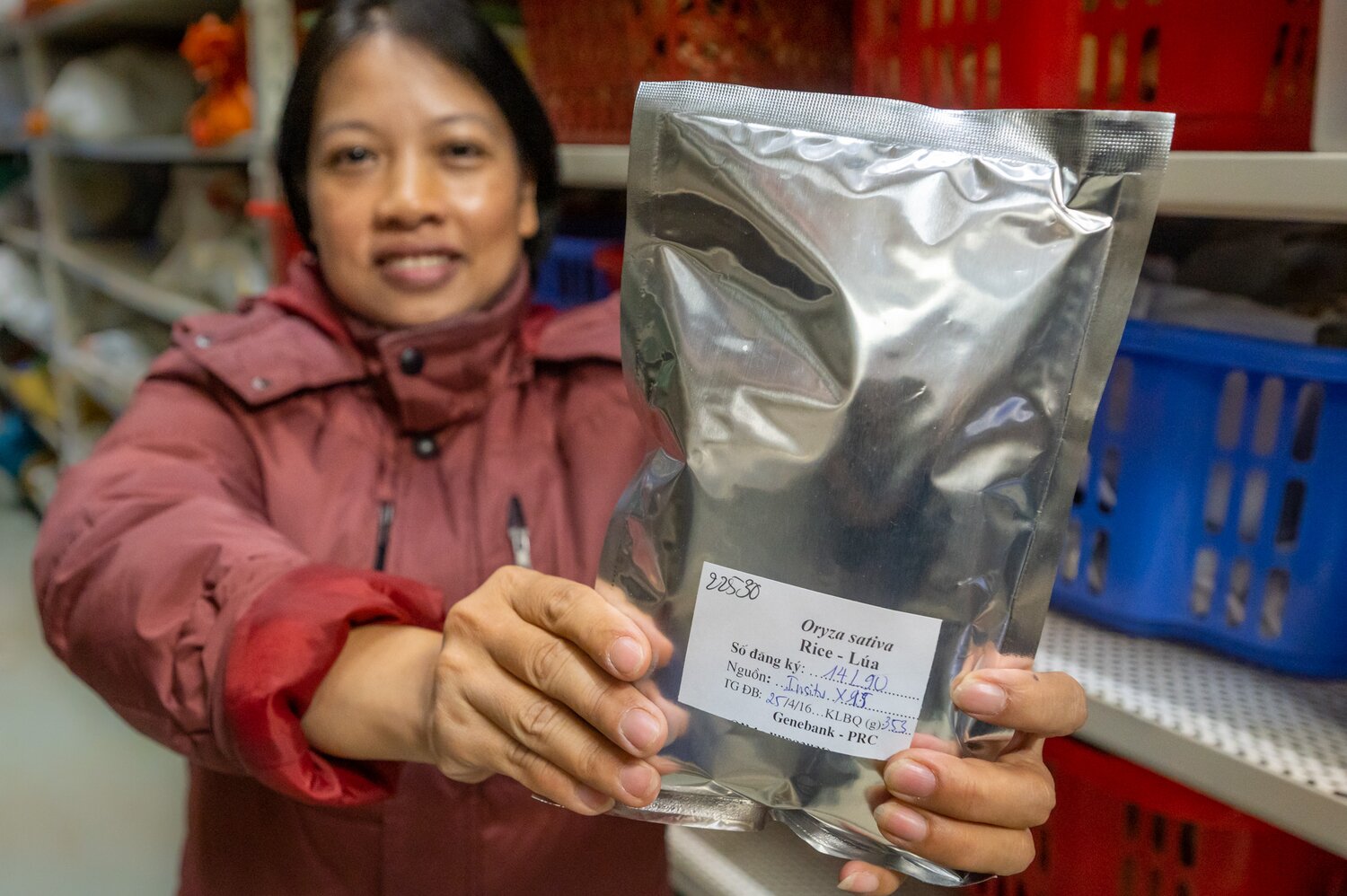
As soon as the seeds have reached the desired moisture content, they are packaged and stored. Seed moisture is maintained by using moisture-proof containers. Nguyen Thi Bich Thuy, a technician with the Division of Genebank and PGR Data Management, shows a rice sample stored in an air-tight aluminum bag in the medium-term storage room. Seeds in medium-term storage are distributed to breeders and farmers.
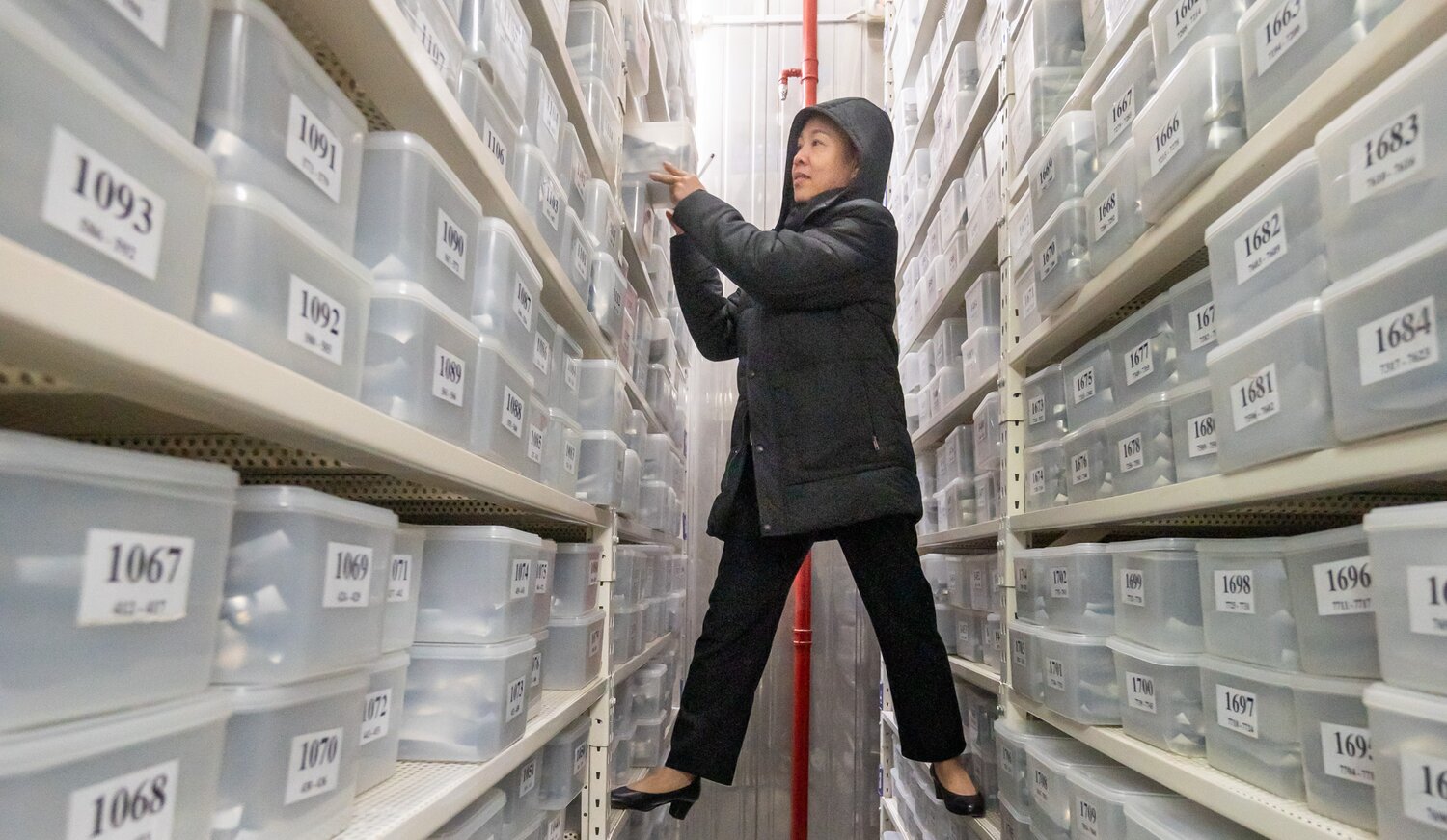
Most seeds live longer in cool and dry conditions. Haxuan Mai, a technician with the Division of Genebank and PGR Data Management, retrieves samples in a medium-term storage room, which is maintained at a constant temperature of 4°C. The adjoining long-term storage room is at -18°C. Seeds in long-term storage are only removed when samples in medium-term storage are exhausted or their viability need monitoring.
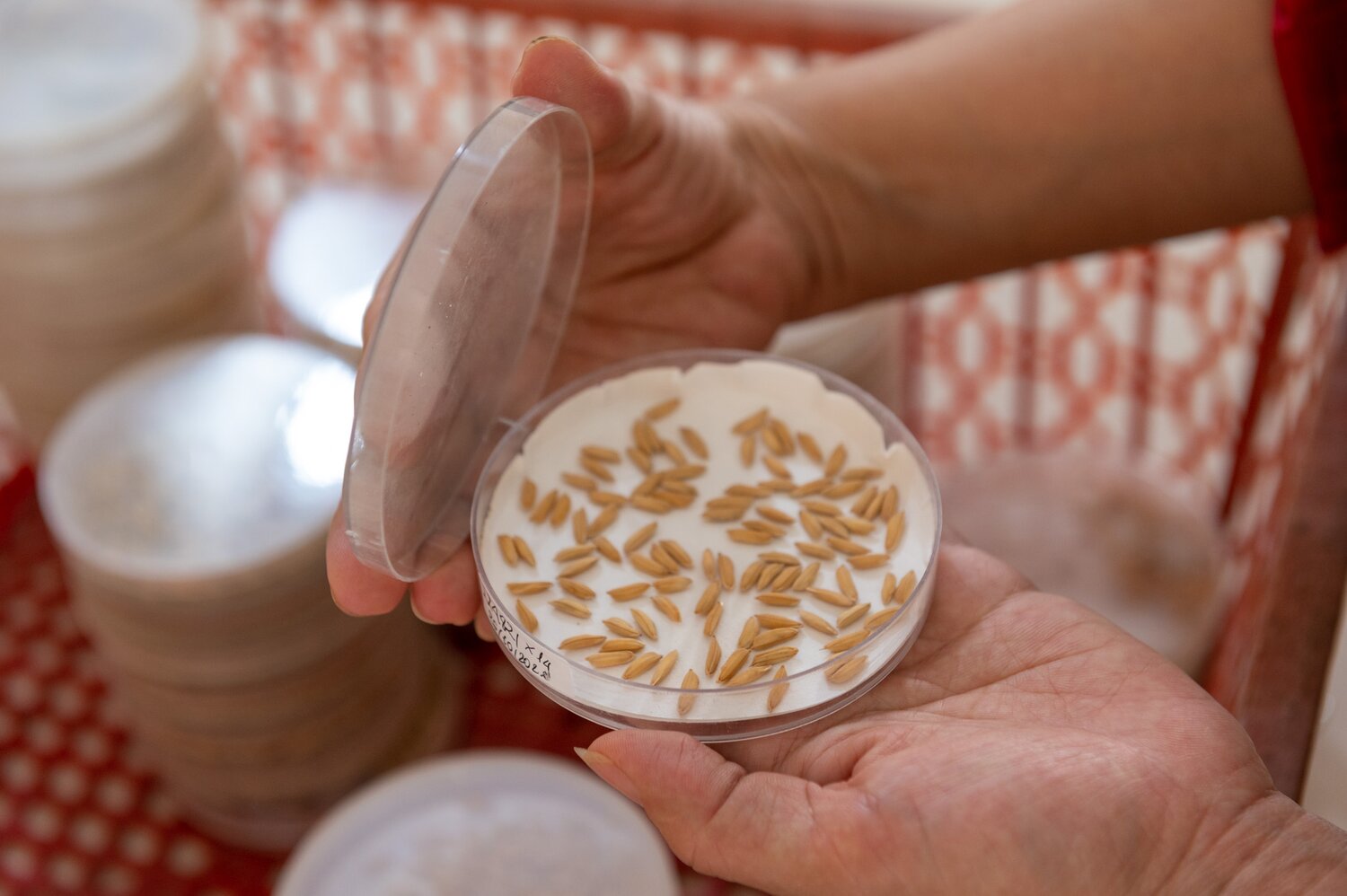
Seeds are living things, and as with any living thing scientists can’t pinpoint with precision how long exactly any seed will live. So genebank managers take a sample of seeds out of each packet every few years to see how many of the germinate. Based on the results, the genebank manager will decide if the seeds should be regenerated. Here, a technician prepares a sample of rice seeds for a germination test.
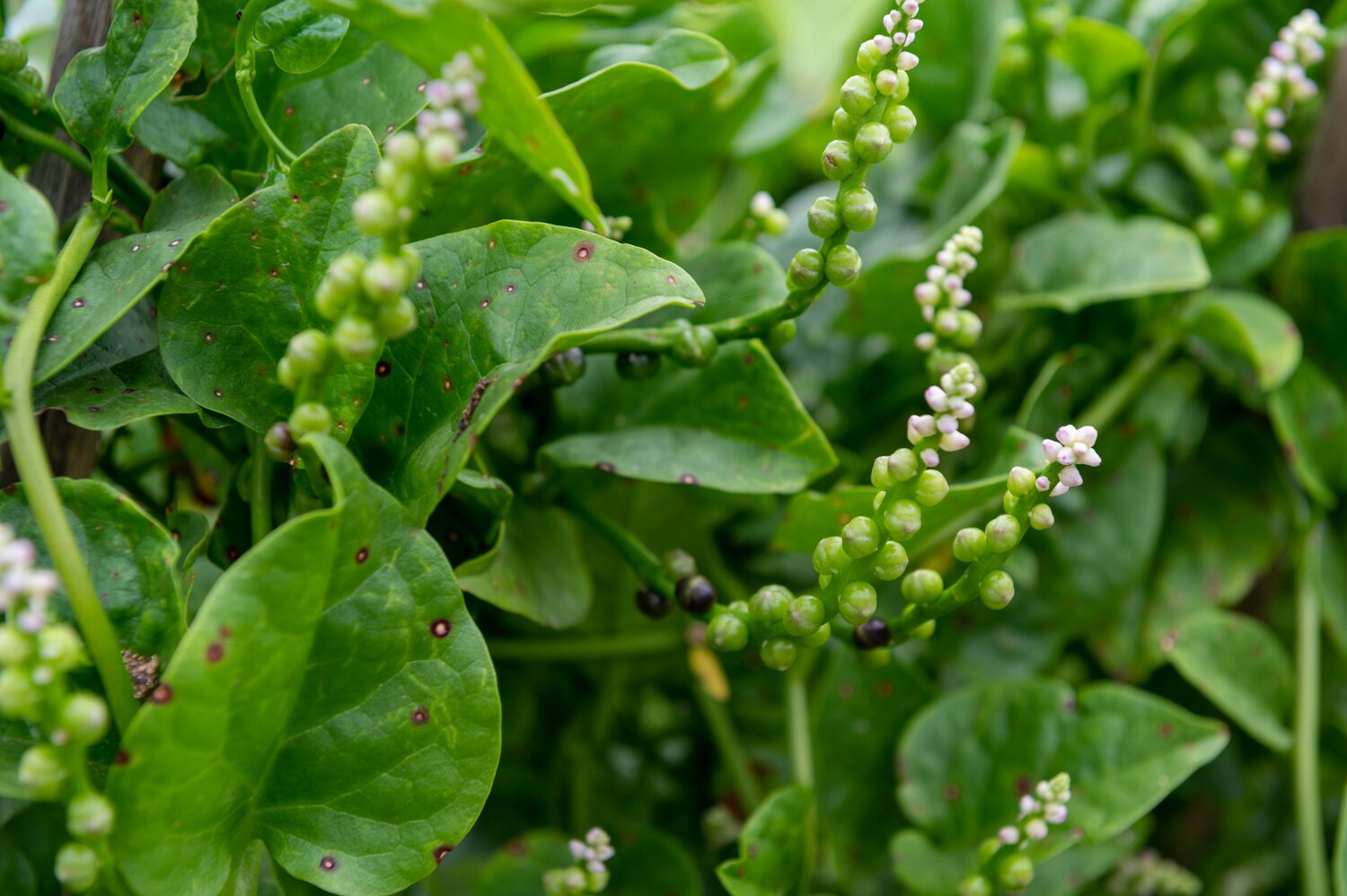
If a germination test shows that a large proportion of the seeds in a sample are no longer viable, the genebank staff will plant the seeds and grow them out to harvest new seeds. In its regeneration fields near Hanoi, the Vietnam National Genebank is regenerating seeds of Malabar spinach (Basella alba), among other species.
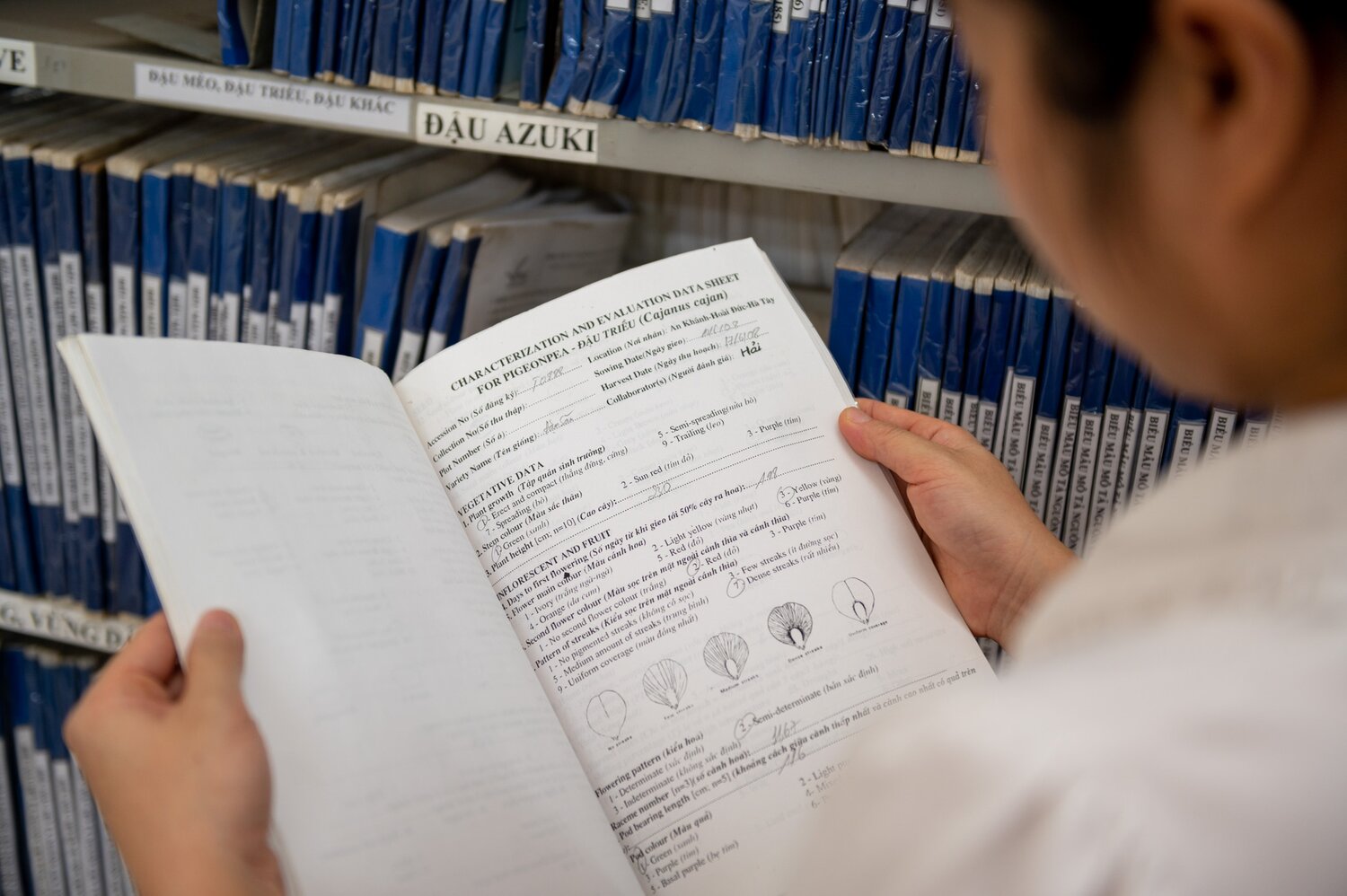
It is essential that the diversity in the genebank is well described, to make it as easy as possible for crop breeders and researchers to use it. To do so, genebank managers will plant samples and let them grow out. They then record the characteristics of the sample and evaluate how it performs in different growing conditions. In this case, a genebank technician is reviewing the data for Accession Number 10888, which is a pigeonpea.
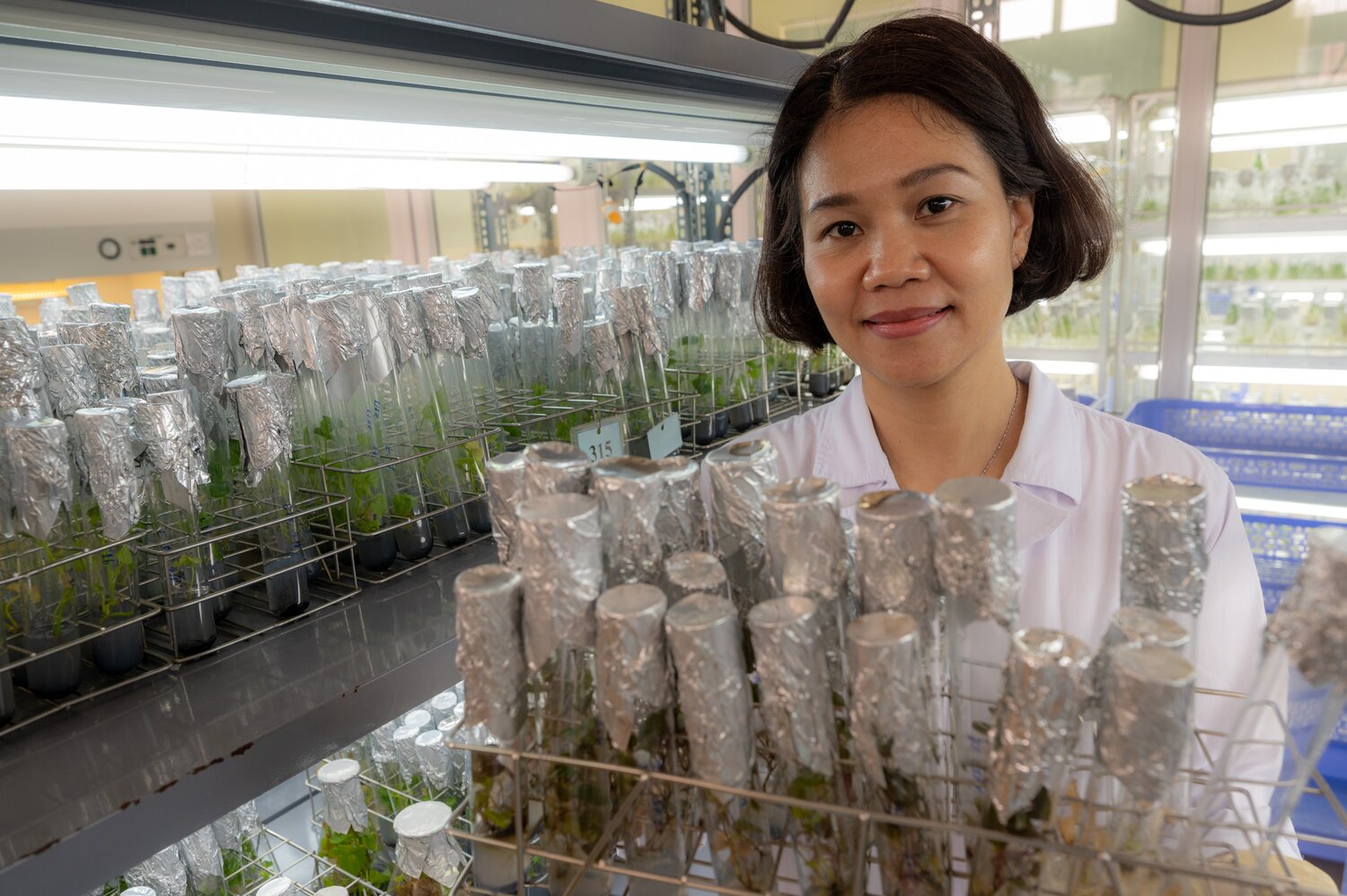
Not all crops can be stored as seed. Crops like taro, yam, ginger, turmeric and banana are stored in the Vietnam National Genebank as living plants in the field, or as tissue cultures growing in vitro. Here, Pham Thi Minh Loan, technician in the Tissue Culture Group, holds a collection of test tubes containing small plants of yam being conserved in vitro.
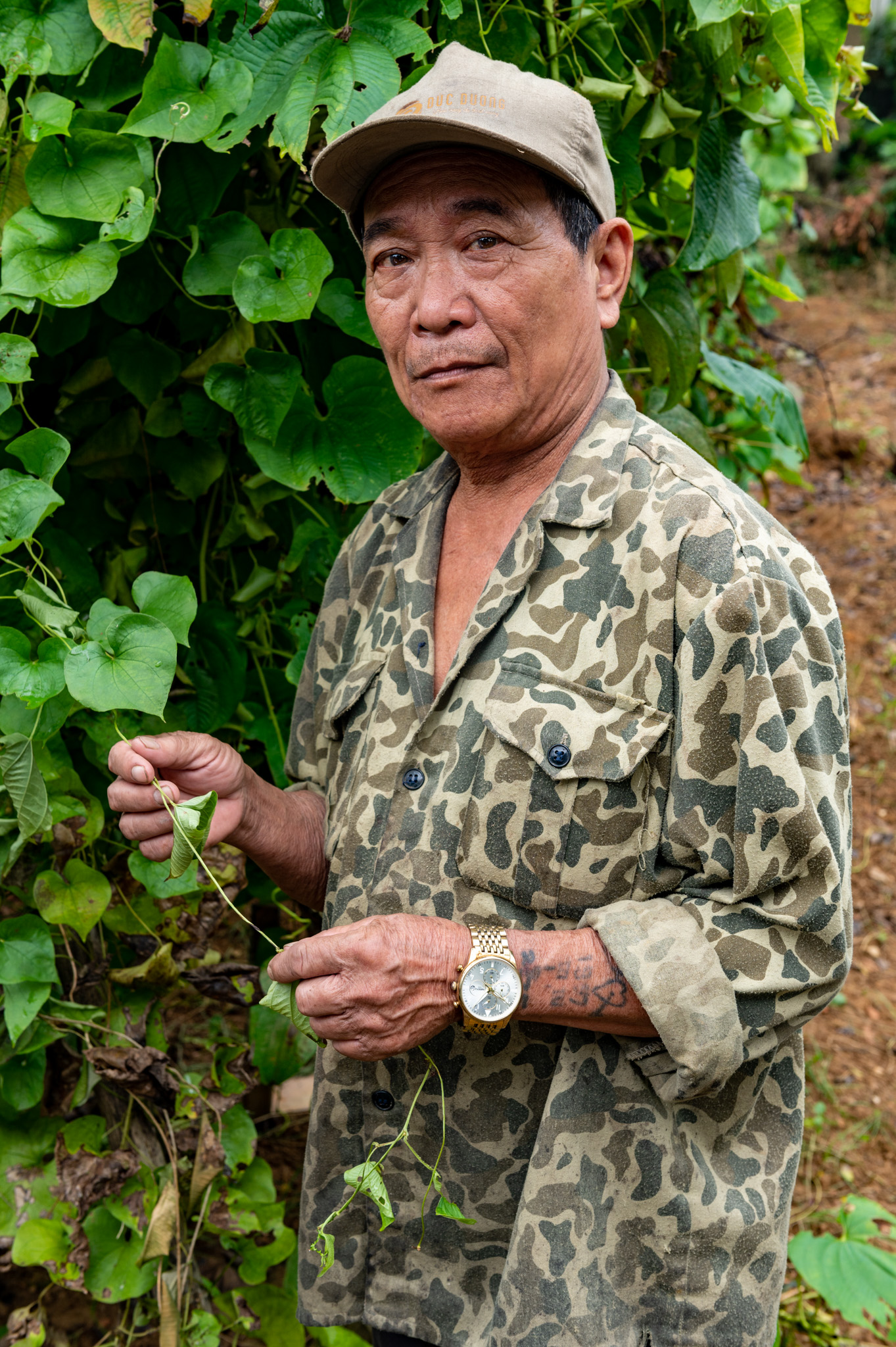
The Vietnam National Genebank also works with farmers, who help maintain collections of some crops in the field. Here farmer Nguyen Van Binh is helping to maintain yam diversity in his fields.
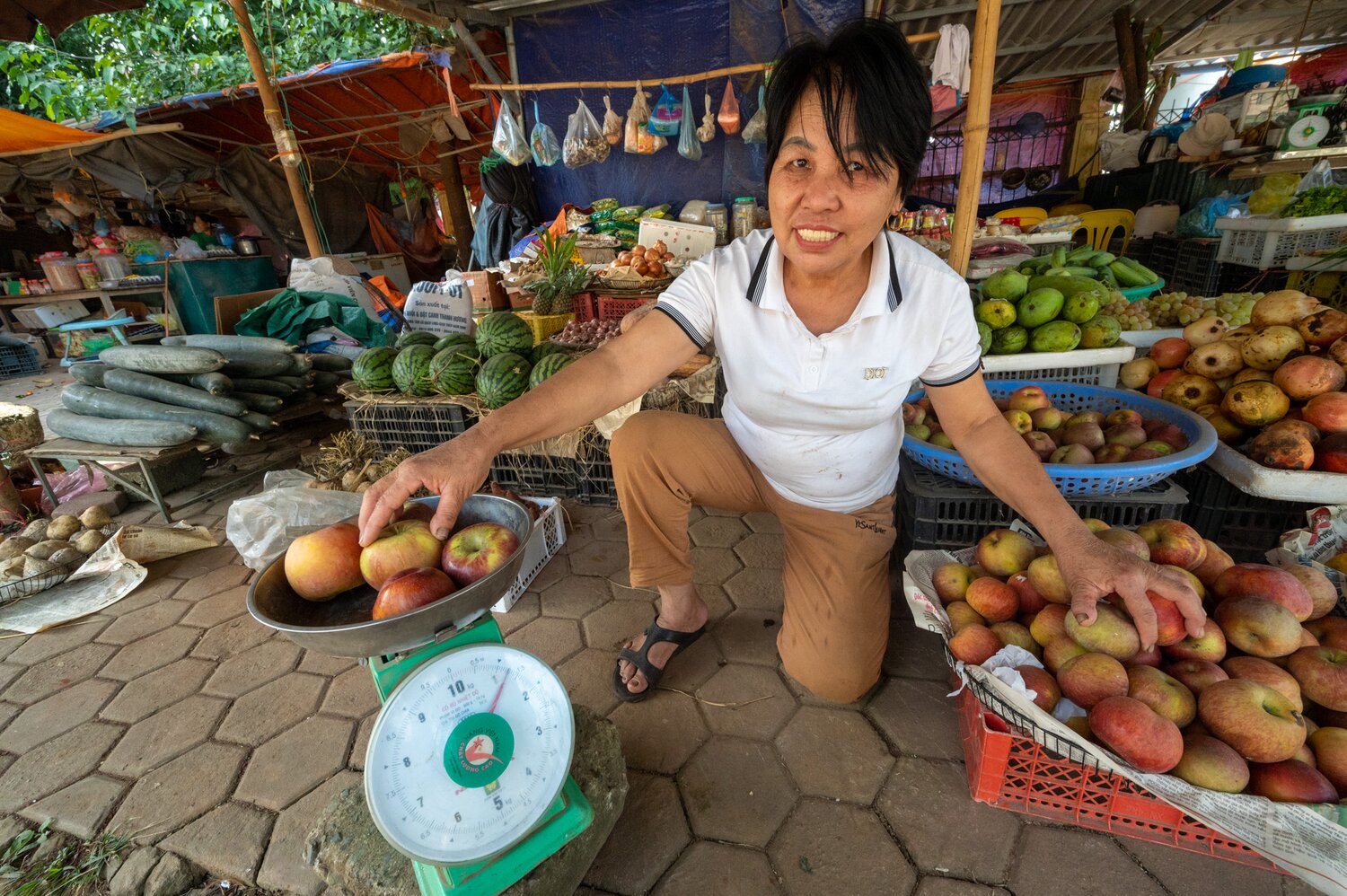
The daily efforts of the staff of the Vietnam National Genebank to safeguard the country’s crop diversity ensures that the incredible abundance of the country’s agricultural heritage will be available for the long term to all Vietnamese, and indeed the world.
Category: BOLD
About the BOLD Project
BOLD (Biodiversity for Opportunities, Livelihoods, and Development) is a major 10-year project to strengthen food and nutrition security worldwide by supporting the conservation and use of crop diversity. The project works with national genebanks, pre-breeding and seed system partners globally. Funded by the government of Norway, BOLD is led by the Crop Trust in partnership with the Norwegian University of Life Sciences and the International Plant Treaty.
